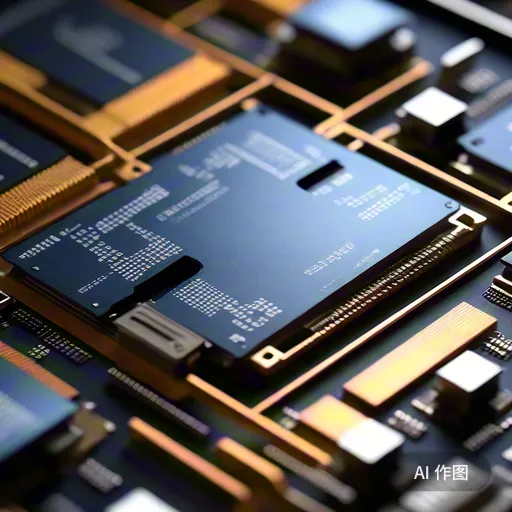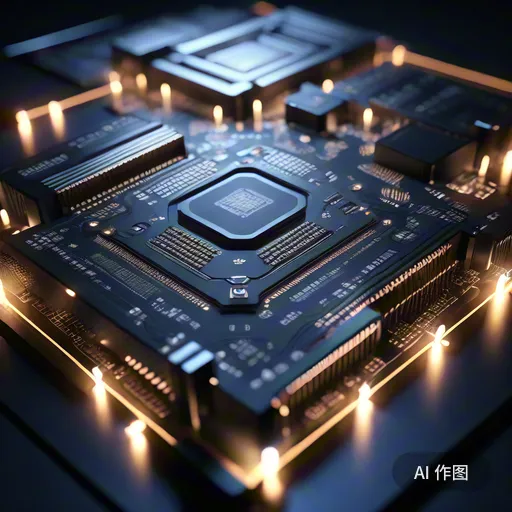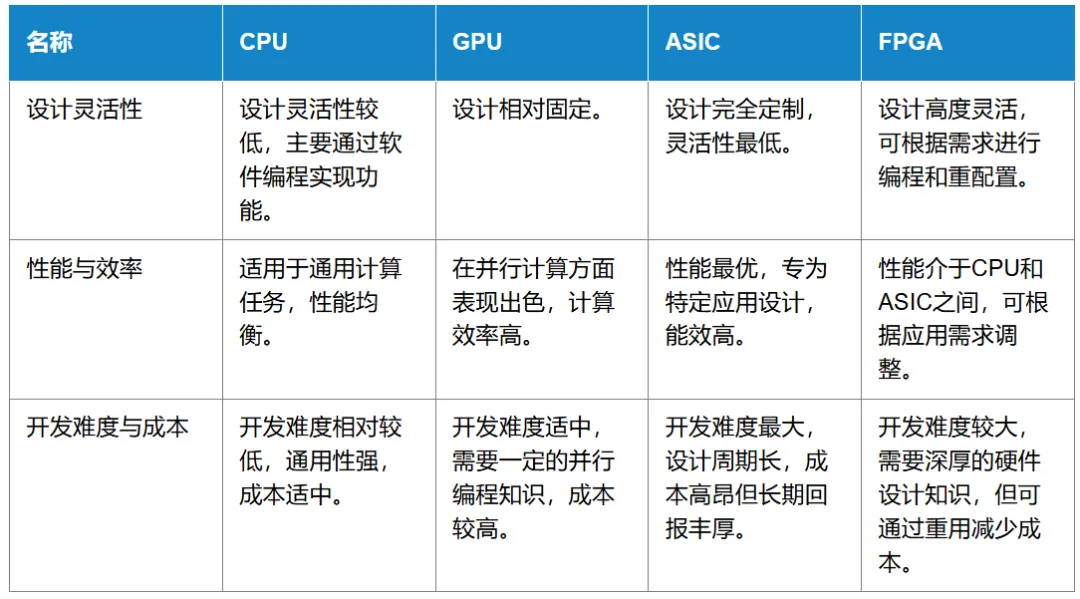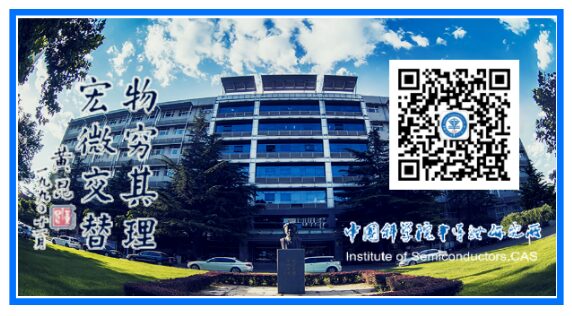
Source: ZTE Document
Original Author: ZTE Document
In today’s rapidly changing technology landscape, computing power has become a crucial driving force for social progress and industrial upgrading. In this vast ocean of computation, CPU, GPU, ASIC, and FPGA serve as the four core forces, each playing an irreplaceable role.
CPU
The CPU (Central Processing Unit) is something everyone is familiar with; as the core of computation and control in computers, it is the ultimate execution unit for information processing and program execution.

CPUs are processors based on the von Neumann architecture, where instructions and data must be accessed from the same storage space and transmitted via the same bus, preventing overlapping execution. This processing flow determines that CPUs excel in decision-making and control but are less efficient in multi-data processing tasks.
Generally, the increase in CPU computing power relies on two aspects: clock frequency and the number of cores. Computer operations are executed step-by-step under the control of clock signals, completing one operation per clock cycle. The clock frequency largely reflects the speed of the CPU. A CPU core is a single processing unit within the CPU that can execute instructions.
Typically, the higher the clock frequency and the greater the number of cores, the stronger the CPU’s performance. However, this also leads to excessive energy consumption and overheating, which may result in CPU failure if cooling cannot keep up.
As CPU computing power gradually reaches a bottleneck, it increasingly fails to meet the exponentially growing demand for computing power. The direction of computing power development is shifting towards specialization to seek higher performance, lower energy consumption, and cost.
GPU
The GPU (Graphics Processing Unit), as the name suggests, is primarily responsible for performing image and graphics-related computations.

Here, you may wonder why a dedicated GPU is needed to handle graphics tasks, instead of the CPU.
This is because GPUs use a parallel programming model, which is completely different from the serial programming model of CPUs. Due to the high parallelism of graphics rendering tasks, GPUs can effectively increase processing power and memory bandwidth simply by adding parallel processing units and memory control units.
The relationship between GPUs and CPUs is akin to many elementary school students working together versus a university professor; although the professor has more extensive knowledge and can handle complex calculations, when it comes to processing many simple calculations, the speed of a group of elementary students can surpass that of a single professor.
Of course, with technological advancements, the application scope of GPUs has expanded to scientific computing, artificial intelligence, machine learning, and more.
ASIC
While CPUs and GPUs can meet general scene demands, as the computing scenarios become more specialized, general-purpose computing chips can no longer meet user needs, leading to the gradual application of ASIC chips.
ASIC (Application-Specific Integrated Circuit) is an integrated circuit designed for specific applications.

The design of ASICs is fully optimized for specific applications, using hardwired methods to implement circuit functions, achieving higher efficiency and lower energy consumption when processing specific tasks, thus reaching the extreme in performance and efficiency.
It’s like custom clothing in the fashion industry; custom-made clothes often better meet customer needs. Although wearing a T-shirt and shorts to a party is possible, it is not suitable. Choosing an outfit that matches the occasion undoubtedly boosts one’s confidence.
Of course, when it comes to custom clothing, the first thought is often “expensive.” The high customization of ASICs also means high R&D costs and technical barriers. Because ASIC chips are designed for specific applications, they require specialized circuit structure and layout design, which typically demands highly specialized skills and extensive experience. The process of custom design is complex and time-consuming, increasing R&D costs and technical barriers. Moreover, ASICs have low flexibility; once designed, they are difficult to modify, making it hard to capture more market share in this rapidly evolving technological era.
Therefore, ASICs are usually suitable for applications that require extremely high performance and relatively stable demand, such as high-performance computing.
FPGA
Once ASIC chips are designed, they cannot be changed. So what happens when users have other requirements?
This brings us to FPGAs (Field Programmable Gate Arrays); as the name suggests, FPGAs are programmable integrated circuits that can be configured by users to perform specific tasks.

Compared to the von Neumann structure of CPUs and GPUs, FPGAs adopt a design without instructions and shared memory; the functions of each logic unit are determined during reprogramming, making FPGAs more energy-efficient than CPUs and GPUs.
So how does FPGA performance compare to ASICs? As mentioned earlier, ASIC chips are custom-made, thus offering stronger performance and lower energy consumption. However, due to higher technical barriers and longer design cycles, they are also more expensive. Yet, when ASIC chips are needed for large-scale use, costs can significantly decrease.
FPGAs are reconfigurable, thus offering significantly improved flexibility. This is akin to playing with building blocks; fixed blocks require design → mold creation → injection molding production → decoration and coloring → packaging before they can be sold. In contrast, intelligent blocks only need to produce a few different shapes and colors, allowing consumers to build according to their imagination and creativity, though the downside is that there may be redundancy during the building process, leading to waste.
Conclusion

END
Reprinted content represents the author’s views only
It does not represent the position of the Institute of Semiconductors, Chinese Academy of Sciences
Editor: March
Responsible Editor: Muxin
Submission Email: [email protected]
1. The Semiconductor Institute has made progress in the research of bionic covering neurons and learning methods.
2. The Semiconductor Institute has made significant progress in inverted structure perovskite solar cells.
3. Why is copper used as the interconnect metal in chips?
4. What exactly is 7nm in chips?
5. Silicon-based integrated photonic quantum chip technology.
6. How abnormal is the quantum anomalous Hall effect? It may bring about the next revolution in information technology!
